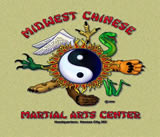Introduction
Weapons have been around since the dawn of time, when the caveman realized they must hunt for food to sustain their daily living. Down through history weapons have had a major role in battles between different tribes and cultures. Martial arts weapons have been no different as man learned to fend off the elements of nature as well as his fellow man, weapons have been the instrument they used. In this book I will discuss some of the significance of different martial arts weapons, their uses, some locations where they were used, some background information and history relating to each one. I will also explain their symbolism in relation to the world around us. Many cultures have used martial arts weapons, but I will primarily delve into the Chinese weapons system. This volume will also explain similarities and differences to Okinawa Ku-Budo as well as Japanese, and Polynesian, and Archipelago Island weapons.
Weapons were divided into several different categories such as long, short, Single-handed, double handed, and projectile types. We will site examples of each category it belongs to and the type of weapon. Some long weapons could include: the Staff (both single and double ended), Spear, Kwan Dau, Single and Double Sided Halberds, Monk Spade, Dao Shou Tzu (sweeper), and Tiger Fork. This is only a handful of possibilities in this group. Single short handed weapons could include: Broadsword, Fan, Tai Chi Sword or Straight Sword (gim), Escrima Stick(s), Iron Ruler, Horse Bench, Si-Kun(3-hand stick), Long Handled sword, and hand spear, or lance. In Ku-Budo weapons the Katana (Samurai Sword), with it’s variations in length and name Daito Ryu (long sword 41”), Shoto Ryu (short sword 24-26”), Wakazaki Ryu ( med sword 24’-30”), and the Ninja To (27” sword of darkness). Double weapons group include: Cern Dau Double Broadsword, Double Hookswords, Gian (sickes/kama), Tui Fa (crutches/tonfa), Daggers, Iron Needles, Escrima Sticks, Axes, Golden Melon Hammers, Butterfly Knives, Wind and Fire Rings, Gen (small fork/sai), and Leopard Rings. The Double weapons group is the largest category of weapons. Projectile weapons include: 3, 5, 7, and 9 Sectional Steel Whips, Rope Dart, Meteor Hammer, Sleeve Daggers, Throwing spikes/knives, Throwing Stars, Monkey’s Rope, Yi Gi Kwan (nunchuku), and San Gi Kwan (3 Sectional Staff). * see weapons page for examples
Martial arts weapons are still widely practiced today by most Chinese, Okinawa, Japanese, and Polynesian stylists. However many of the more exotic weapons have fallen by the wayside. Many masters today seem to refuse to pass on some of the ancient and traditional forms of these weapons. In modern tournaments you hardly see the weapons of the past but maybe only the basic staff, spear, broadsword, and the straight sword, which is mostly used by Tai Chi practitioners. Many of the weapons have taken on a Sport quality, meaning they are altered from their traditional form to make them more exciting to the crowd watching the event. This sport aspect has been consuming the traditional values, qualities, and morals of ancient weaponry, as forms are mixed with many gymnastics, and other styles and systems forever changing and altering character building techniques based on real life situations on the past. If you are lucky enough to find a qualified master who even knows these rare and more exotic weapons, it will be extremely difficult if not impossible to convince them you are a student worthy to receive that knowledge.
For more information on martial arts weapons, or to order this book, or other Video/DVD
visit merchandise page or
contact us by email at mcmacinfo@gmail.com or call 816-226-7047
Read More Shaolin Weapons



